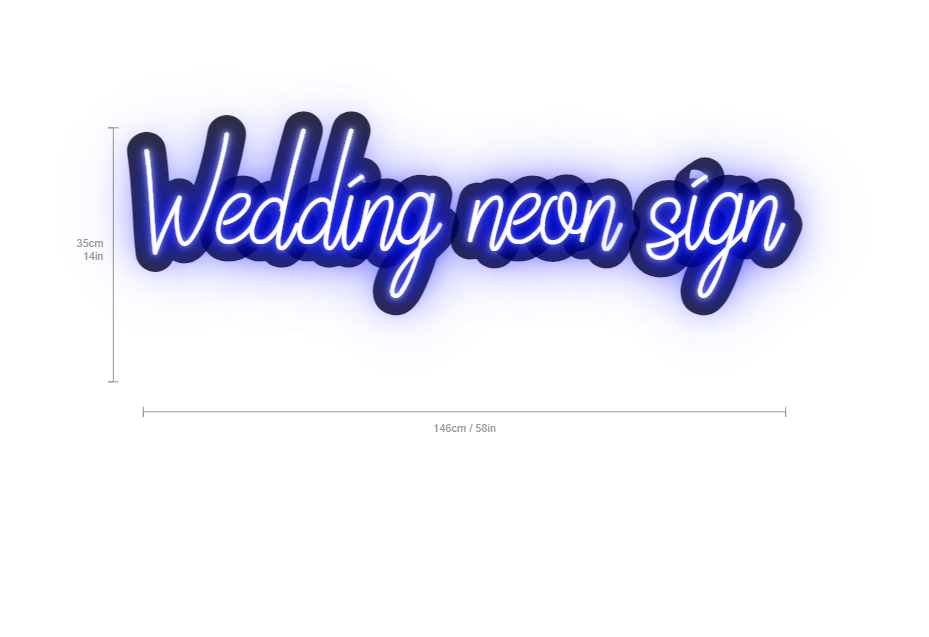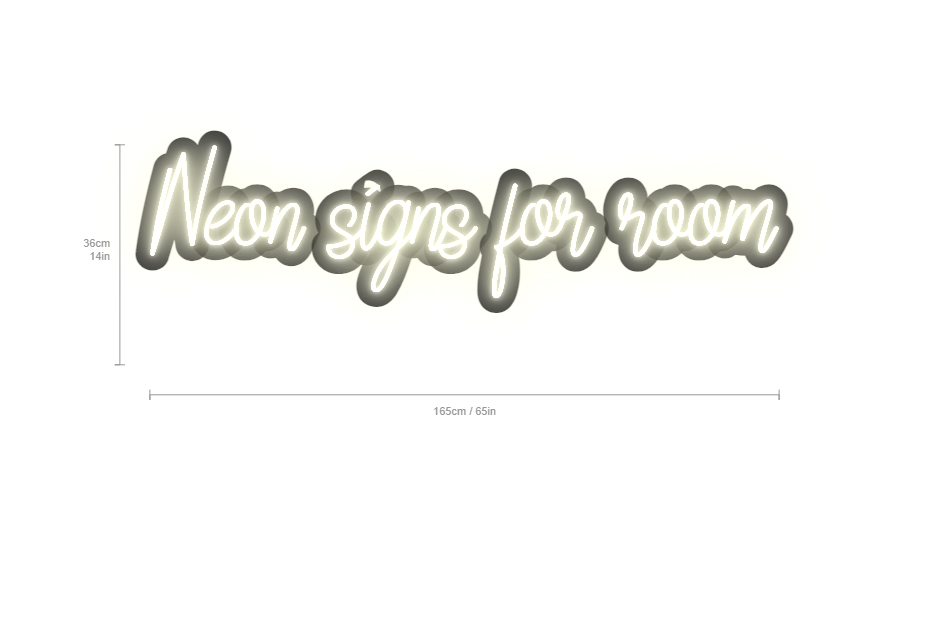Introduction to LED Neon Signs
LED neon signs have become increasingly popular in recent years as an alternative to traditional glass neon signs. These signs offer the same vibrant illumination and aesthetic appeal as traditional neon while incorporating modern LED technology, resulting in various benefits. This answer will explore what LED neon signs are, how they work, their advantages over traditional neon signs, and their diverse applications in contemporary settings.
What Are LED Neon Signs?
LED neon signs are decorative lighting fixtures that simulate the appearance of traditional neon gas signs but use light-emitting diodes (LEDs) as their light source. Unlike traditional neon signs, which are made from glass tubes filled with gas, LED neon signs use flexible LED strips encased in a soft silicone or PVC housing. This design allows for greater flexibility in creating various shapes and designs.
LED neon signs can be custom-made to feature specific text, logos, or artistic designs. They are popular in homes, businesses, and events, serving both decorative and functional purposes. Their vibrant colors and ability to create intricate designs have made them a favorite choice for modern signage and interior decor.
How Do LED Neon Signs Work?

The operation of LED neon signs is fundamentally different from traditional neon signs. Here’s a detailed breakdown of how they function:
-
LED Technology:
- LEDs are solid-state devices that emit light when an electric current passes through them. They are highly efficient and can produce a bright, vibrant light in various colors without requiring the gas-filled tubes used in traditional neon signs.
-
Flexible LED Strips:
- The core of LED neon signs consists of flexible LED strips that can bend and curve to create various shapes. These strips typically contain multiple LEDs spaced evenly apart, allowing for uniform light distribution.
-
Housing:
- The LED strips are encased in a soft, translucent silicone or PVC tubing. This housing protects the LEDs and diffuses the light, creating a smooth, even glow similar to that of traditional neon.
-
Power Supply:
- LED neon signs require a low-voltage power supply, typically ranging from 12V to 24V. This makes them safe to use in various settings, including homes and businesses.
-
Control Options:
- Many LED neon signs come with control options, such as dimming features or remote control functionality. Some advanced models even allow for color-changing capabilities, enabling users to adjust the hue and brightness according to their preferences.
Advantages of LED Neon Signs
LED neon signs offer several advantages over traditional neon signs, making them an appealing choice for both consumers and businesses:
-
Energy Efficiency:
- LED technology consumes significantly less energy than traditional neon. This efficiency results in lower electricity bills, making LED neon signs an economical choice in the long run.
-
Durability:
- LED neon signs are made from flexible materials that are less prone to breakage compared to glass neon signs. The durability of LED technology means that these signs can withstand more wear and tear, making them suitable for both indoor and outdoor use.
-
Safety:
- Traditional neon signs contain gases that can be hazardous if the glass breaks. LED neon signs, being made from plastic or silicone, pose less risk and do not contain any toxic substances. Additionally, the low-voltage power supply further enhances their safety profile.
-
Customization:
- The flexibility of LED strips allows for endless design possibilities. Businesses and individuals can create custom shapes, fonts, and colors that reflect their brand or personal style.
-
Brightness and Visibility:
- LED neon signs produce bright light that is visible even in well-lit environments. This high visibility makes them effective for advertising and attracting attention.
-
Low Heat Emission:
- LEDs emit very little heat compared to traditional neon signs, which can become hot to the touch. This characteristic makes LED neon signs safer to handle and reduces the risk of fire hazards.
-
Environmentally Friendly:
- LED neon signs are more environmentally friendly than traditional neon signs. They do not contain hazardous materials, and their energy efficiency contributes to a smaller carbon footprint.
Applications of LED Neon Signs
The versatility of LED neon signs allows them to be used in a wide range of applications, including:
-
Business Signage:
- Many businesses use LED neon signs to attract customers. These signs can feature logos, slogans, or open/closed statuses, making them effective for storefronts, restaurants, bars, and cafes.
-
Home Decor:
- LED neon signs have gained popularity in home decor, serving as statement pieces in living rooms, bedrooms, and game rooms. They can add a modern touch to any space and create a fun ambiance.
-
Events and Celebrations:
- LED neon signs are often used at events such as weddings, parties, and corporate gatherings. They can feature custom messages or decorative designs that enhance the event's theme and atmosphere.
-
Art Installations:
- Artists are increasingly using LED neon signs as part of their installations. The ability to create unique shapes and vibrant colors allows for artistic expression in various forms.
-
Retail Displays:
- Retailers utilize LED neon signs to create eye-catching displays that highlight promotions, new arrivals, or special sales. These signs help to draw attention and drive sales.
-
Themed Environments:
- Many themed environments, such as escape rooms or amusement parks, incorporate LED neon signs to enhance the overall experience. These signs can contribute to the ambiance and storytelling aspects of the environment.
-
Restaurants and Bars:
- Establishments often use LED neon signs to convey their brand personality. For example, a cocktail bar might have neon signs featuring vibrant drink names, while a diner could have retro-themed signs to create a nostalgic vibe.
-
Nightclubs and Entertainment Venues:
- Nightclubs frequently use LED neon signs to create dynamic and vibrant atmospheres. The signs can be synchronized with music or change colors to enhance the overall experience for patrons.
-
Indoor and Outdoor Use:
- LED neon signs are suitable for both indoor and outdoor use. Many are weather-resistant, making them ideal for patios, outdoor events, and business signage.
Conclusion
LED neon signs represent a modern, efficient, and versatile alternative to traditional neon signage. Their unique combination of vibrant colors, flexibility in design, and energy efficiency makes them an increasingly popular choice for businesses, homes, and artistic endeavors. With numerous advantages such as durability, safety, and customization options, LED neon signs continue to light up our lives in creative and exciting ways. Whether used for advertising, decor, or artistic expression, these signs embody the spirit of contemporary design and innovation.




